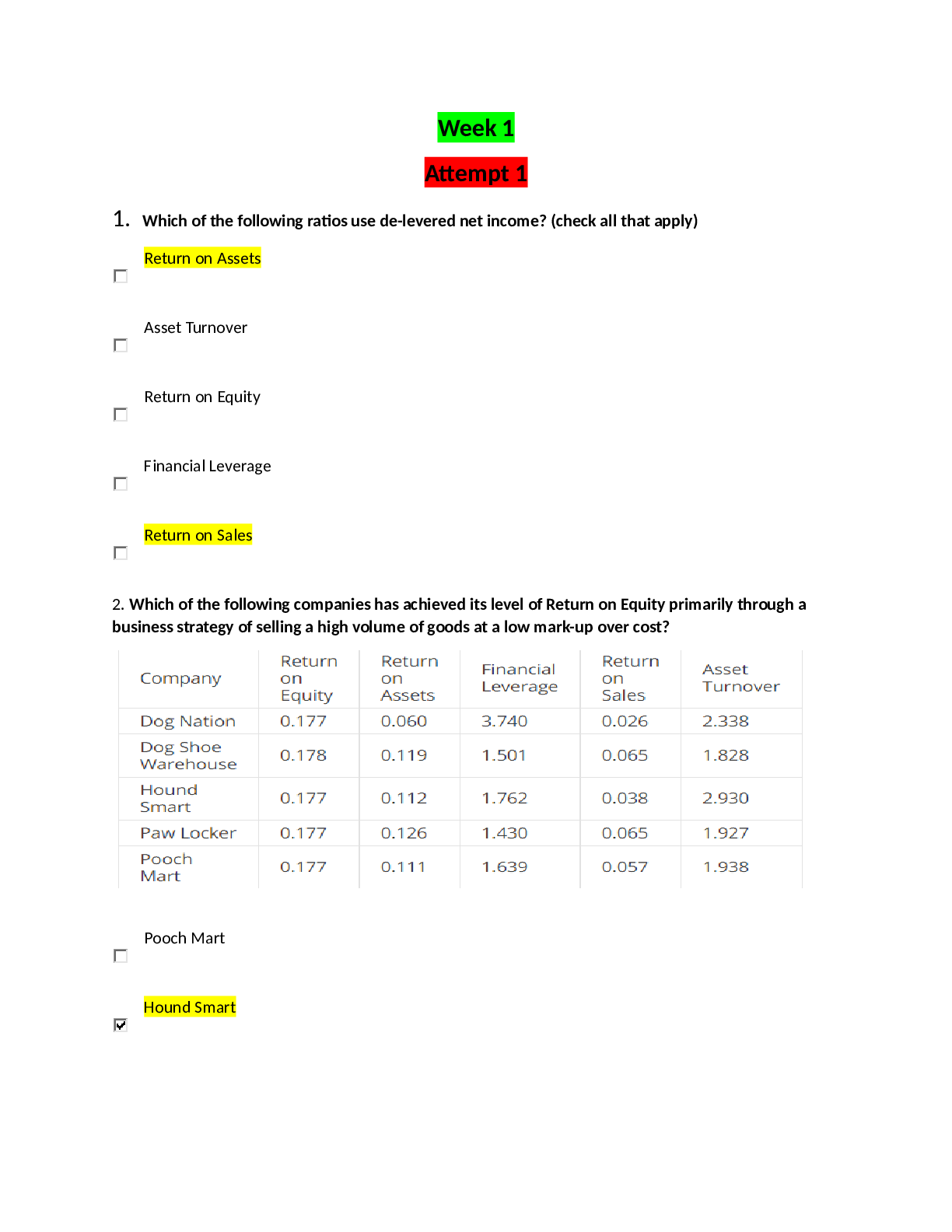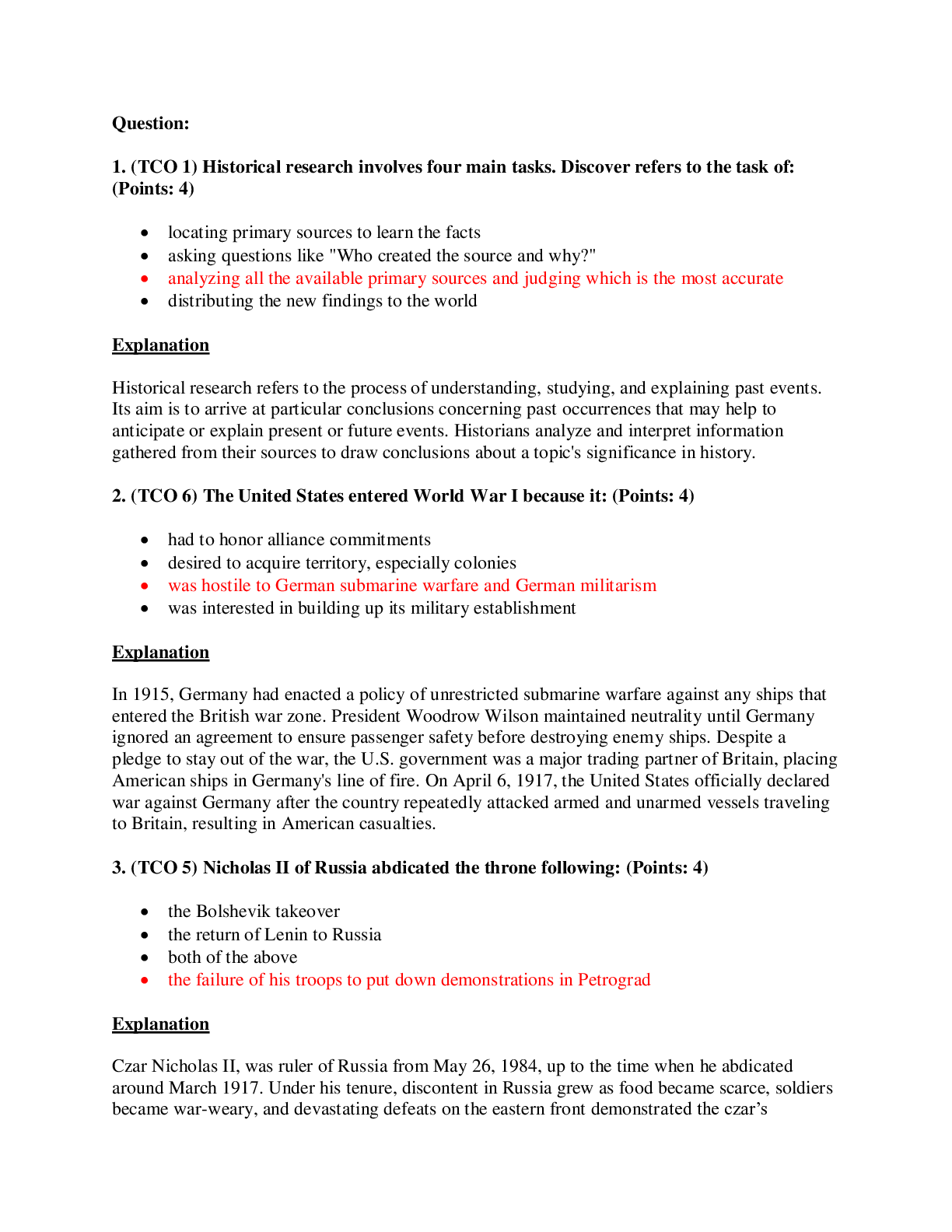History > QUESTIONS & ANSWERS > History for 'Quiz for Spotlight: Cotton’s Global Empire'. Graded A With 100% Score (All)
History for 'Quiz for Spotlight: Cotton’s Global Empire'. Graded A With 100% Score
Document Content and Description Below
History for 'Quiz for Spotlight: Cotton’s Global Empire' Item: Quiz for Spotlight: Cotton’s Global Empire Score: 100% (Calculated) Answers: 1. What technological innovation(s) allowed A... merica to rapidly increase its cotton production and become the prime cotton supplier for several European countries? Faster ships to transport the cotton abroad More efficient machines to spin the cotton into yarn Modern city sewer systems to allow for a sufficient factory workforce A new machine to clean raw cotton With Eli Whitney's invention in 1793 of a machine to clean raw cotton, the American cotton industry grew exponentially and soon supplied cotton to many European countries. Score: 1 of 1 2. How did cotton change the workforce in Great Britain? Cotton manufacturing drew many new workers from the British countryside. Workers now had more time off, and new leisure activities emerged. Great Britain imported many workers from its colonies abroad. African slavery was reinstituted in Great Britain. Textile factories required a new, larger workforce, drawing huge numbers of people from the countryside to cities that were the new manufacturing centers; many of these workers were women and children. Score: 1 of 1 3. What impact did the growth of cotton production have on the workforce in the United States? It forced the government to become more involved in regulating the workplace environment. It caused the westward expansion of plantation slavery. It caused wage laborers to move from northern cities to the southern cotton-growing regions. It created a big demand for more immigrants to join the workforce. In the United States, the growth of cotton production led to the westward expansion of plantation slavery. Score: 1 of 1 4. Why were European countries so dependent on the United States for cotton imports? European cotton production could not keep up with demand. American technology was better for growing cotton. American cotton was cheaper than European cotton. The European climate was not suitable for growing cotton. The climate in Europe was not suitable for growing cotton, so many European countries relied on imports of American cotton. Score: 1 of 1 5. According to observers, what were the conditions for wage laborers in industrial cities such as Manchester and Liverpool? The new housing complexes for workers were very impressive and modern. Workers had more disposable income than they were used to having. Child workers were allowed to work shorter, easier hours. Working and living conditions were terrible. Observers noted that working conditions were terrible in the new textile factories in cities like Manchester and Liverpool, and workers' housing was “offensive, dark, damp, and incommodious.” Score: 1 of 1 [Show More]
Last updated: 2 years ago
Preview 1 out of 4 pages

Buy this document to get the full access instantly
Instant Download Access after purchase
Buy NowInstant download
We Accept:

Reviews( 0 )
$6.00
Can't find what you want? Try our AI powered Search
Document information
Connected school, study & course
About the document
Uploaded On
Feb 12, 2020
Number of pages
4
Written in
Additional information
This document has been written for:
Uploaded
Feb 12, 2020
Downloads
0
Views
129






.png)
.png)
.png)
.png)
.png)
.png)
.png)


.png)








